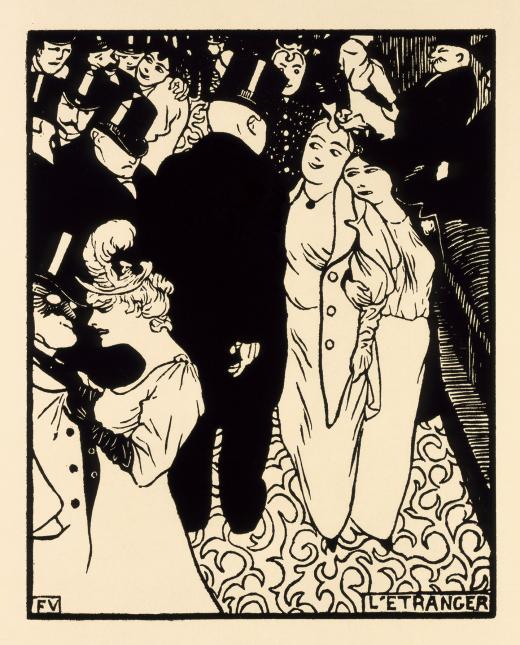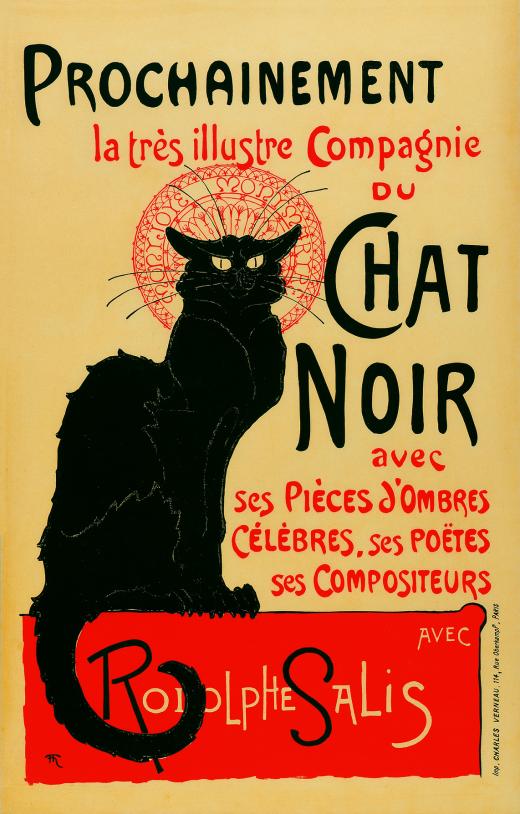THE NABIS AND PRINT CULTURE IN THE 1890S
On the heels on the 1890 exhibition of Japanese prints at the École des Beaux-Arts, printmaking experienced a renaissance in France, both in lithography and woodcut. Among those who launched this revival were the Nabis, along with artist Henri de Toulouse-Lautrec. The Nabis (from the Hebrew word meaning "prophets") were a loosely connected brotherhood whose art was influenced by the flat planes of color and pattern of Paul Gauguin’s Synthetism and by the abrupt cropping and twodimensional compositions of Japanese prints. Renouncing easel painting, the Nabis’ work crossed media to prints, posters, and illustrations for journals such as La Revue blanche, co-owned by their patron Thadée Natanson. As a "low" art exempt from the academic rules that governed painting, printmaking offered an artistic freedom that many found attractive.
During the 1890s artists experimented with the possibilities of the stark contrasts of the woodcut, as Félix Vallotton did with his inventive use of black-and-white in scathing commentaries on Parisian society. Other Nabis, like Pierre Bonnard and Édouard Vuillard, were enthralled with color lithography, testing the limits of the medium in myriad ways, even exerting manipulations during the printing process, by working closely with master printer Auguste Clot. They produced posters and print portfolios commissioned by dealers, perhaps most importantly gallerist Ambroise Vollard, which depicted contemporary life in highly reductive, yet incisive scenes of Paris. Toulouse-Lautrec turned his energies to the art of the poster. These large-scale, eye-catching, and brilliant creations were short-lived advertisements, pasted around Paris. Passers-by (potential consumers) were seduced by exciting caricature-like portrayals of bohemian venues—the café-concerts of Montmartre or the famed performers who headlined there, including La Goulue (the glutton), and Jane Avril. The prints in this gallery celebrate the lively existence that has come to define fin de siècle Paris.



